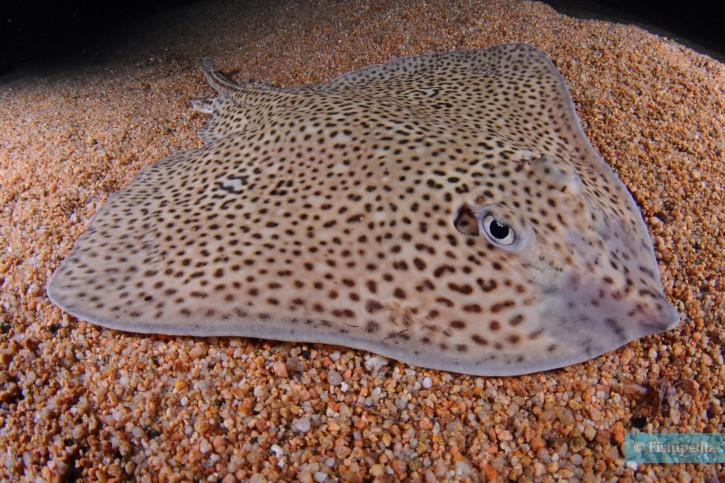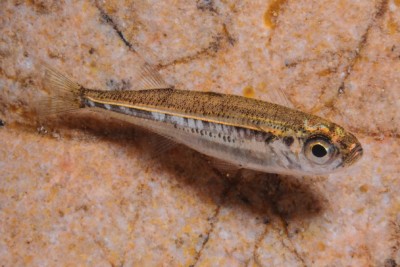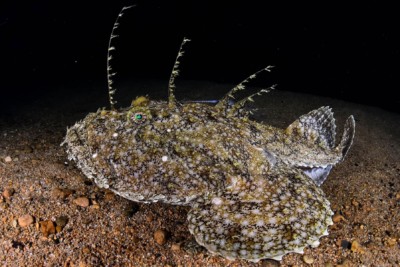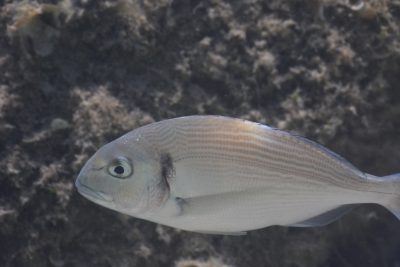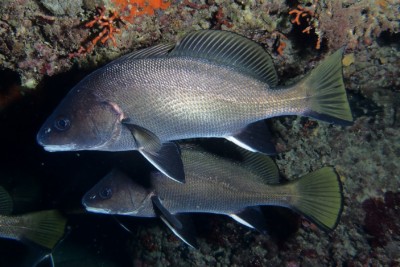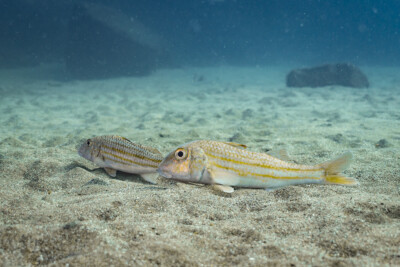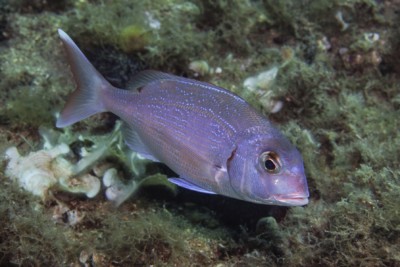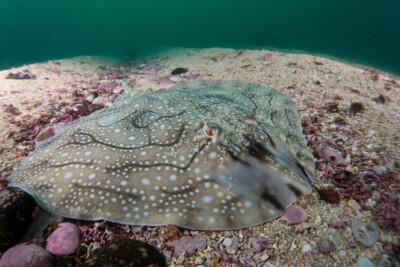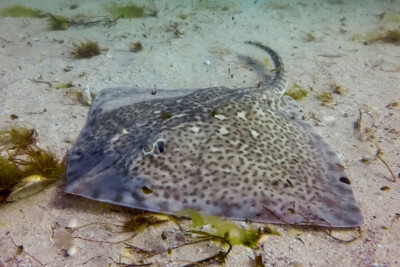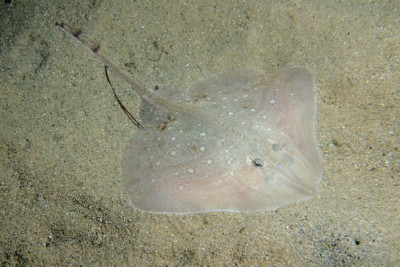spotted skate
| Scientific name | Raja montagui |
|---|---|
| Descriptor | Fowler |
| Year of description | 1910 |
| IUCN category (World) | LC |
| Family | Rajidae |
| Genus | Raja |
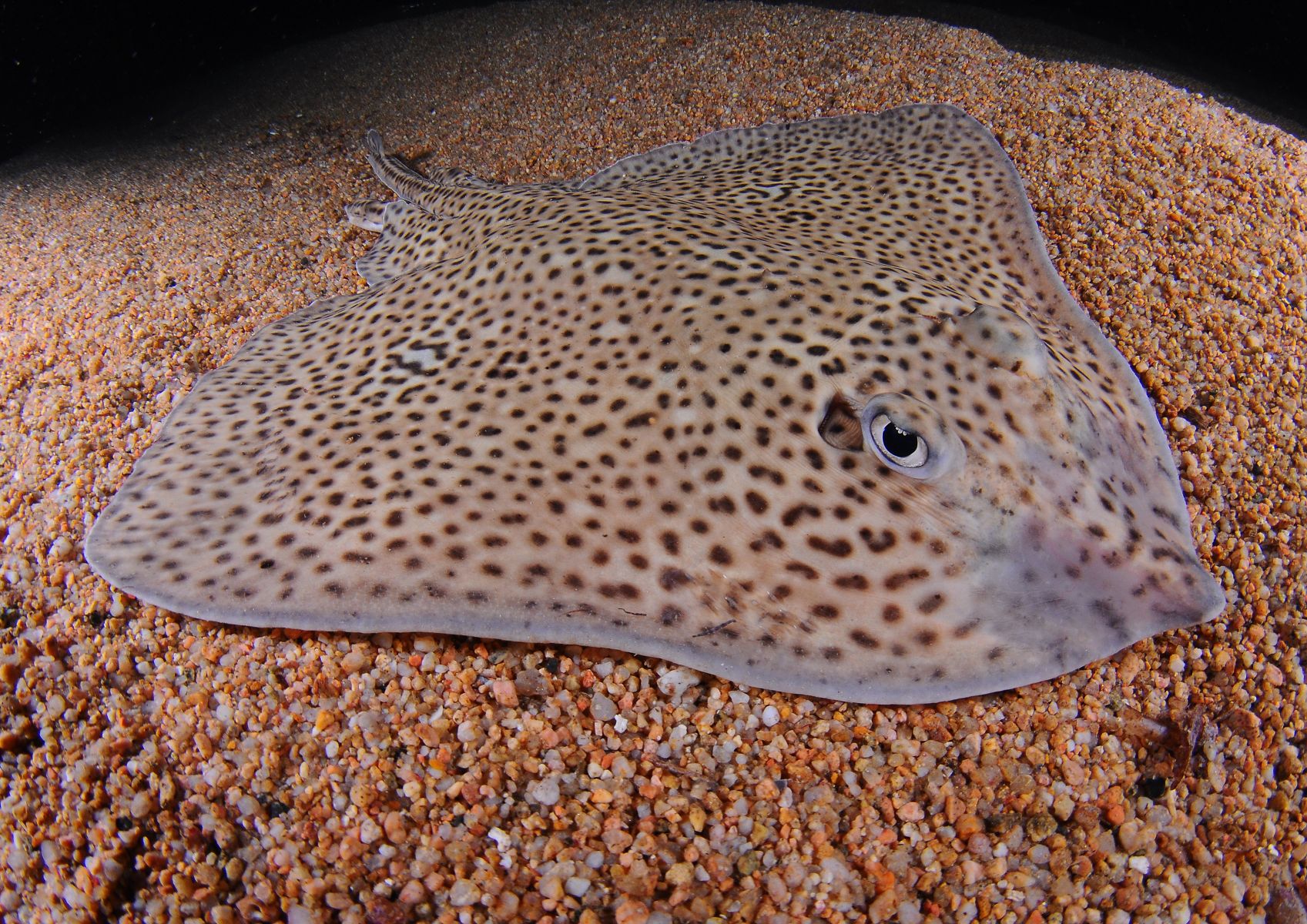

Introduction
The Raja montagui skate is found from the Baltic Sea to the coast of Mauritania. It is also present in a large part of the Mediterranean Sea. This medium-sized species spends most of its time buried in sandy or muddy bottoms. It is more common in coastal waters.
Who is it?
Morphology
-
Type
-
Average size50 cm
-
Maximum size85 cm
-
Longevity18 year
-
Mimicrysand
-
Patternponctuations
-
Type
-
Average size50 cm
-
Maximum size85 cm
-
Longevity18 year
-
Mimicrysand
-
Patternponctuations
How to recognize This fish ?
As with other skates of the genus Raja, the head, trunk, and pectoral fins are fused. The entire body is flattened, the snout is pointed, and the mouth is located on the underside.
The upper body is brownish, covered with small dark spots. In most individuals, a significant concentration of these markings forms a ring on the posterior part of each pectoral fin. The underside of the body is white.
A row of spines runs from the nape to the first dorsal fin. In young individuals, the upper surface is smooth. It becomes spiny in larger specimens, except for the central area of the pectoral fins.
Sexual dimorphism
Females are larger than males. Like other skates and sharks, males possess two claspers, organs used for sperm transfer to the female's cloaca. Males can only use one at a time.
Behaviour & Life cycle
-
dietcarnivorous
-
Sociabilityliving in a group or alone
-
territorialYes
-
Way of livingdiurnal
This skate spends most of its time buried in soft sediments. By doing so, it avoids predation and can surprise its potential prey.
Juveniles live in shallow sandy coastal areas. They tend to follow large objects that they may mistake for their mother. Adults primarily feed on crustaceans but can also capture worms, cephalopods, and small fish.
In addition to its camouflage abilities, this skate can detect weak electric fields generated by other organisms and produce its own fields.
Reproduction
-
Reproductionovovivipare
This oviparous species forms a couple to reproduce. Eggs are laid in the summer in the form of elongated capsules protected by sharp rigid horns. They are deposited in sandy or muddy bottoms.
These capsules measure between 5 and 7 cm in length, and 3 to 5 cm in width. They are protected by a keratin envelope. After 5 to 6 months of incubation, the juveniles hatch fully formed and already measure about a dozen centimeters.
Harmless species
This species does not represent any particular threats to humans when encountered in its natural environment.
Origin and distribution
Geographic distribution & Conservation
Stock status and sustainable fishing with Ethic Ocean
In European waters, the spotted skate and the spotted skate are, according to ICES scientists, the most abundant. The situation is generally improving for the most important stocks of these two species due to reduced fishing pressure and more favorable environmental conditions... Learn more
Conservation status of populations (IUCN)
What is its habitat?
Natural environment characteristics
-
Temperature12 - 25 °C
-
Depth8 - 530 m
Biotope presentation
This species is found in sandy and muddy bottoms, up to 530 meters deep. Juveniles live in shallow waters.
Species of the same biotope
To go further
Sources & Contributions
Participation & Validation
The Fishipedia team and specialist contributors are committed to providing high-quality content. However, although the information comes from scientific sources or testimonials from specialists, the cards may contain inaccuracies.

Benoit Chartrer

Julie Magnus

Silvia Gomez
Translation
Translation done with the valuable contribution of our translators, who make this information available to a wider audience. We sincerely thank them for their commitment.
Bibliographic references
RAJIDAE - J.D. McEachran - M.R. de Carvalho - FAO Fisheries Synopsis - 0.
Scientific partners
Tags
Same genus
Species of the same biotope
